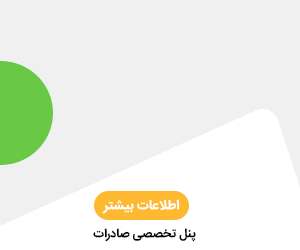Export of Leather from Iran: High-Quality Supply for Global Markets
Introduction
The export of leather from Iran has long been a vital part of the country’s trade, with Iranian leather recognized worldwide for its quality and craftsmanship. With a rich history of tanning and leather production, Iran has established itself as a leading player in the global leather market. The export of leather from Iran includes a range of high-quality products, such as raw hides, semi-finished leathers, and finished leather goods. This article will explore the advantages of buying leather from Iran, discuss the different types of leather available, and provide insights into the regulations that govern the supply chain of leather exports.
Why Choose Leather from Iran?
- High-Quality Raw Materials: Iran’s leather industry is built on access to high-quality raw materials. The country is home to a thriving livestock sector, particularly cattle and sheep, which provide premium hides for leather production. This abundant supply of raw hides ensures that the export of leather from Iran is both reliable and of superior quality. Buyers looking for durable and luxurious leather materials often turn to Iranian suppliers for their needs.
- Skilled Craftsmanship and Tradition: Iran has a rich tradition of leather craftsmanship that dates back centuries. The expertise of Iranian tanners and artisans contributes to the production of high-quality leather, known for its smooth texture, durability, and refined finish. This deep-rooted knowledge in leatherworking sets Iranian leather apart in international markets, making the export of leather from Iran a preferred choice for businesses seeking premium materials.
- Diverse Range of Leather Products: The export of leather from Iran includes a variety of products to meet different market needs. Iranian suppliers offer raw and semi-finished leather, suitable for use in various industries such as fashion, automotive, and furniture. Additionally, finished leather goods like belts, bags, and footwear are popular export items. This diversity ensures that buyers can source different types of leather from Iran, whether they need high-quality hides or beautifully crafted finished products.
Popular Varieties in the Export of Leather from Iran
- Sheep and Lamb Leather: Known for its softness and flexibility, sheep and lamb leather is highly valued in the fashion industry for making garments, gloves, and accessories. The export of sheep leather from Iran is especially popular in European markets, where it is appreciated for its fine grain and lightweight feel.
- Cowhide Leather: Cowhide is among the most widely exported types of leather from Iran, known for its durability and strength. This makes it suitable for applications in furniture, automotive interiors, and footwear. The export of cowhide leather from Iran is favored by international buyers seeking robust materials that maintain their quality over time.
- Goat Leather: Goat leather from Iran is recognized for its distinctive texture and resilience. It is used in high-end accessories like bags, shoes, and wallets. The export of goat leather from Iran has gained popularity in markets that value its unique look and feel.
Market Overview and Key Importing Countries
The export of leather from Iran targets several major markets, including countries in Europe, Asia, and the Middle East. These markets value the quality and competitive pricing of Iranian leather:
- Italy: As a global hub for fashion and leather craftsmanship, Italy is a significant importer of high-quality leather. The export of leather from Iran to Italy includes both raw hides and semi-finished leathers that are further processed into luxury goods.
- China: With a large demand for raw materials to support its own manufacturing industry, China is a key market for the export of leather from Iran. Iranian leather is used in producing a wide range of consumer goods, from apparel to automotive interiors.
- Turkey: Turkey serves as a major hub for re-exporting leather products, making it an important market for Iranian leather. The close geographical proximity and established trade relationships facilitate the efficient export of leather from Iran to Turkey.
Regulations and Standards for the Export of Leather from Iran
To ensure that the export of leather from Iran meets international standards, the industry is governed by specific regulations and certifications:
- Quality Certification: Iranian leather exports must comply with international quality standards, including ISO certifications and other relevant industry benchmarks. These certifications ensure that the leather is processed to meet the expectations of international buyers, including aspects like tensile strength, dye fastness, and surface finish.
- Environmental Standards: The leather industry is known for its environmental impact, and Iran has taken steps to ensure that its tanning processes are in line with environmental regulations. The export of leather from Iran involves compliance with environmental standards that control waste management, water usage, and the handling of chemicals used in the tanning process. This focus on sustainability is increasingly important for buyers seeking eco-friendly sources of leather.
- Phytosanitary and Customs Regulations: As with other agricultural exports, the export of leather from Iran is subject to phytosanitary regulations to ensure that the hides and finished leather products are free from contaminants. Iranian exporters work closely with the Ministry of Agriculture and the Iranian Customs Administration to ensure compliance with importing countries’ standards, facilitating smooth trade operations.
Competitive Advantages of the Export of Leather from Iran
- Competitive Pricing: Due to lower production costs, the export of leather from Iran offers competitive pricing without compromising on quality. This price advantage makes Iranian leather an attractive option for buyers who need premium materials at reasonable costs, helping them maintain profitability in their own markets.
- Strategic Location: Iran’s location offers logistical advantages for the export of leather, allowing for shorter transit times to key markets in Europe and Asia. This ensures that buyers receive their orders quickly and in optimal condition, reducing lead times for manufacturing and retail operations.
- Strong Production Capacity: Iran’s well-established leather production facilities have the capacity to handle large orders, ensuring a consistent supply for buyers. This makes the export of leather from Iran a reliable option for companies that need regular shipments to meet their production needs.
Conclusion
The export of leather from Iran stands out for its quality, diversity, and competitive advantages in the global market. With a reputation for producing premium hides and a tradition of skilled craftsmanship, Iran is a reliable supplier of both raw and finished leather products. By adhering to international standards and leveraging its strategic location, Iran offers a strong value proposition for businesses looking to buy leather from Iran. Whether sourcing for fashion, automotive, or other industries, buyers can trust the export of leather from Iran to deliver quality and value.
For those looking to buy leather from Iran, the country’s robust supply chain, adherence to quality standards, and rich variety of products make it an excellent choice in the competitive world of global leather trade.






پاسخ بگذارید